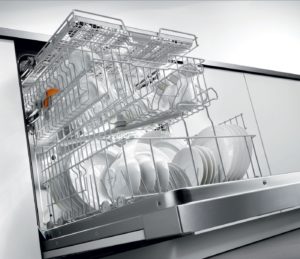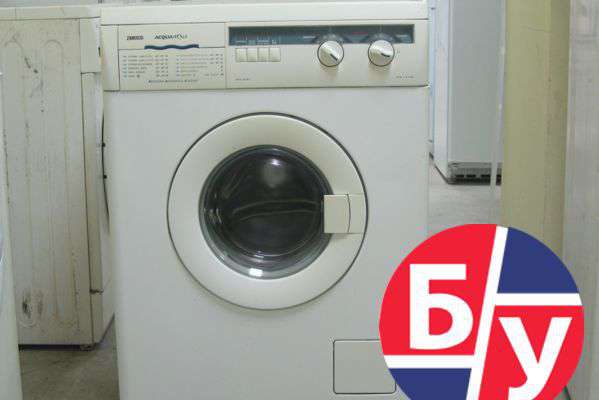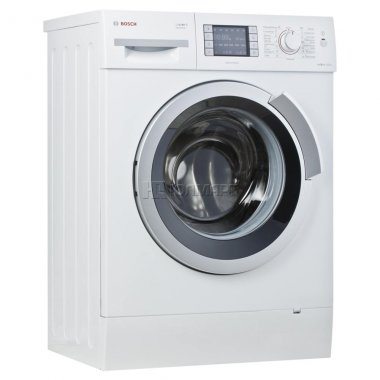Water in a new dishwasher upon purchase
 The situation is quite trivial: you received a new dishwasher from the store, wet inside. The first thought is that we are being deceived. This is how the human brain works; bad things are easier to believe than good things. We immediately form terrible guesses in our heads that “sneaky sellers” have conspired and are selling used dishwashing equipment. Of course, we imagine ourselves as victims of the machinations of the senior manager, who, while registering the goods, smiled sweetly at us, and behind our back he was plotting something wrong. Stop, let's use common sense and not prematurely stigmatize people who do their job well.
The situation is quite trivial: you received a new dishwasher from the store, wet inside. The first thought is that we are being deceived. This is how the human brain works; bad things are easier to believe than good things. We immediately form terrible guesses in our heads that “sneaky sellers” have conspired and are selling used dishwashing equipment. Of course, we imagine ourselves as victims of the machinations of the senior manager, who, while registering the goods, smiled sweetly at us, and behind our back he was plotting something wrong. Stop, let's use common sense and not prematurely stigmatize people who do their job well.
Where does the water in the equipment from the store come from?
If a machine you just bought in a store turns out to be wet inside, and there is generally water in the salt tank, this does not mean at all that the equipment has been used by someone before. Where does the water in the new dishwasher come from? Immediately after assembly at the enterprise, either a dishwasher or a washing machine undergoes bench tests. The car is driven mercilessly, checking all the necessary technical parameters. If everything is fine with the equipment, it is removed from the stand, packaged and shipped in order to be delivered to the store.
According to regulations, the manufacturer is not supposed to drain the remaining water after testing, so the machine still arrives at the store wet inside. If the machine is wet inside, this, from our point of view, is not always bad.
- This may indicate that the machine was recently removed from the stand at the enterprise, immediately went to the store and you immediately bought it. The equipment didn’t have time to sit in the warehouse and that’s great.
- This may mean that the seller takes his responsibilities responsibly. Before shipping the dishwasher for delivery, he started it up and checked it, although you usually don’t get this from sellers.
Some large hardware stores have displays where machines are connected to electricity and water for display to customers. If your model was removed from such a stand and you were not warned about this, it may turn out to be wet.
- This may mean that someone bought your dishwasher before you, installed it and started it up, and then for some reason refused to buy it, returning the equipment back to the store.
The last situation should alert you, however, the return of complex household appliances is rarely allowed by sellers. If the machine is in good working order and has no flaws, the seller will not accept it back just like that. This means that you, as a conscientious buyer, should not think about the bad. Of course, there are also scammers among sellers, but moisture in the dishwasher is not at all the kind of evidence that can point specifically to criminals. And that’s good, less nerves.
How to understand that the equipment is not used?
So, you received a dishwasher with water inside, and you just can’t calm down? Apparently our words didn’t really convince you. This means that all that remains is to check for yourself whether your dishwasher has been used before. It’s difficult to do this when buying directly in a store, but at home it’s quite possible.
- Inspect the drain hose carefully. In used dishwashers, the drain hose inside is clogged with food debris. It is difficult to wash them out completely, so upon careful examination, small residues can be detected.
- Unscrew and inspect the drain filter as well as the grille. The goal is the same - you need to detect the smallest food remains and traces of fat.After bench tests, the company launches a special program for cleaning the machine, so that there should be no food residues in the new equipment. This is what they do with Bosch dishwashers.
- Unscrew the salt reservoir and inspect the inside. If a compressed layer of salt is detected, it means that the machine has been in use for some time. If there is little salt and it is not compressed, it means that the equipment was not used, but only tested.
- Disconnect the inlet hose and get to the flow filter. This is a mesh at the base of the intake valve. Remove the mesh and inspect. The new machine is absolutely clean, since the company uses specially prepared process water for testing. There are no impurities in this water, which means nothing settles on the mesh. Could there be limescale deposits on the flow filter of a new machine? Of course not, if the mesh is dirty, it means they sold you used equipment and you need to file a claim with the store.
Nobody canceled the standard inspection of the packaging and body of the machine. If there are minor damages on the case, and the box was clearly not opened carefully before, this is additional evidence in favor of the version that the product was used. In general, be vigilant, but do not brand the seller ahead of time. First, collect evidence, and then present it in an oral or written complaint. If you set a goal, you can “bring out” even the most cunning fraudster.
So, if you find that water has leaked from a brand new dishwasher, do not rush to think about the bad. Perhaps the water remained after testing at the plant where the machine was assembled. However, it wouldn’t hurt to check, especially since it’s not difficult to do. Good luck!
Interesting:
Reader comments
- Share your opinion - leave a comment
Categories
Washing machine repair


For buyers

For users

Dishwasher

















Add a comment